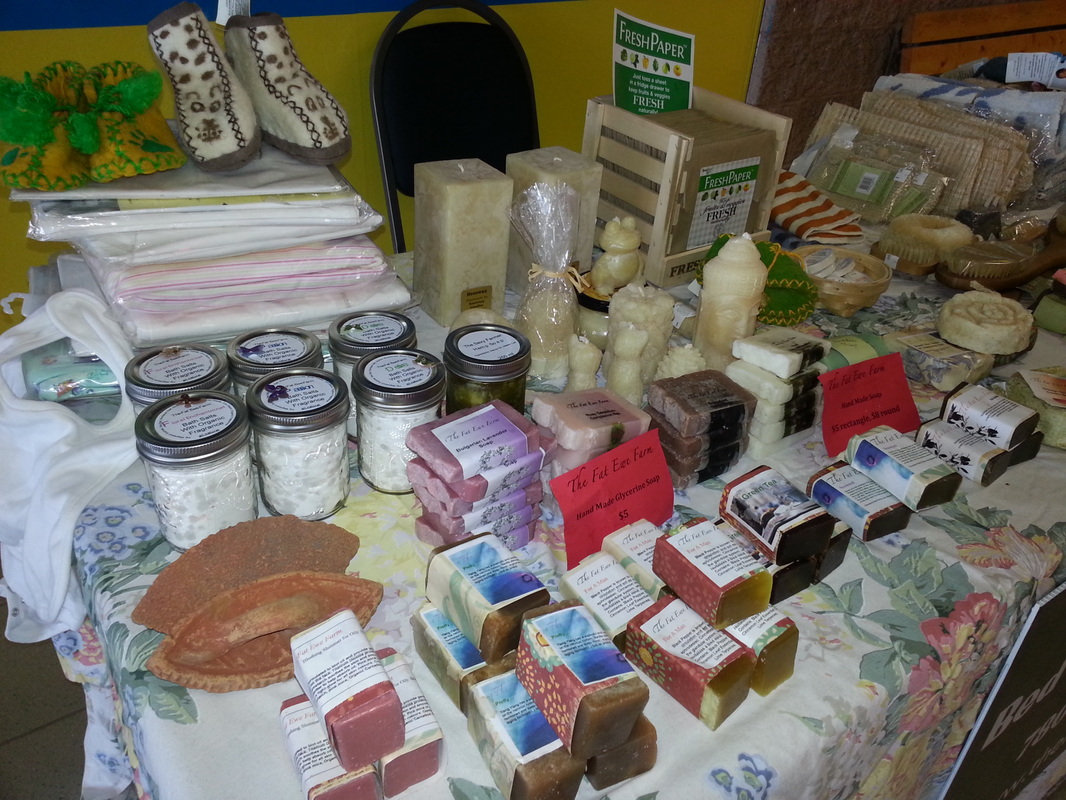I really enjoy making soap. To me it is a form of creative expression. Some ideas sort of tug at me: sustainability, local, renewable, cheap (oops, did I say that one?).
Yes, cheap. For example, long ago, well, not so long ago, like maybe in my grandmother's times, soap was made from rendered animal fats. No one imported oils or fats for soap. The lye was even made from wood ash by pouring water through ash and then boiling it down to potash. The problem is that no one ever really knew exactly how strong that lye was, so even a tried and true recipe could result in a harsh soap.
Today, I use store bought lye, which is the same each and every time. I still use rendered fats and have rendered some myself, but usually I do not have quantities of animals fats enough to make soap, so I buy rendered lard and tallow from local sources. The lard and tallow soaps fit the local, sustainable and renewable categories and both fats, either separately used or blended together, make a very good soap.
But I also enjoy speciality oils such as Laurel Berry Oil, which when combined with olive oil, makes a famous soap called Allepo soap. Just olive oil makes another famous soap called castile. Both these soaps are extremely mild, but take six months to cure and harden. Then there are various hard oils, such as coconut, shea and palm, but once I use the rest of the palm oil, I will no longer use it because it endangers the rain forest animals, even what they call sustainable palm oil.
There are four ways I make soap: cold process which means mix lye and oils and beat until thick and pour into molds. This is good soap, but it takes a long time before the saponification process is complete, so the soap is not able to be used for months. The curing can be speeded up by completing the soap in a 170 degree oven, which causes the chemical reaction to occur quickly. This is known as the gel phase and results in a more of a translucent soap.
Another process is to mix the lye and water and then the oils and beat it until thick, but then to cook it until it is done and quickly shove it into molds. This is the hot process and results in a good soap that is useable right away, though is still best left to harden for a few weeks or longer.
The third process, my favourite, is to mill the soap. I like to make a good base, usually lard, tallow and lye only, cook it and let it sit for a few weeks, then grate it and melt it, but then since the lye is processed through the saponification process, the additives are much more stable than when used in cold process or even hot process soap. So, things like milks, clays, botanicals and herbs, essential oils and flowers can be added to the soap with little change in their properties. Extra fat can be added too, which is called super fatting the soap and results in a thin layer being left on the skin. Special oils, such as Argan, Sea Buckthorn or Meadowfoam do not get used by the lye, but remain in the soap and provide benefits to the skin.
The fourth process is to make liquid soaps. Some oil soaps do not harden and can be diluted to make a liquid soap without the soap gelling further. Hemp oil makes a thick jelly soap on its own and that can be made liquid by adding water. It is a great shampoo. But liquid soap can also be made with potassium hydroxide instead of sodium hydroxide (the regular lye). Liquid soap is very popular these days and essential oils, colours and a few other extracts can be added to create delightful soaps.
So, I bought lye when I went to town. It is time to make soap!


 RSS Feed
RSS Feed